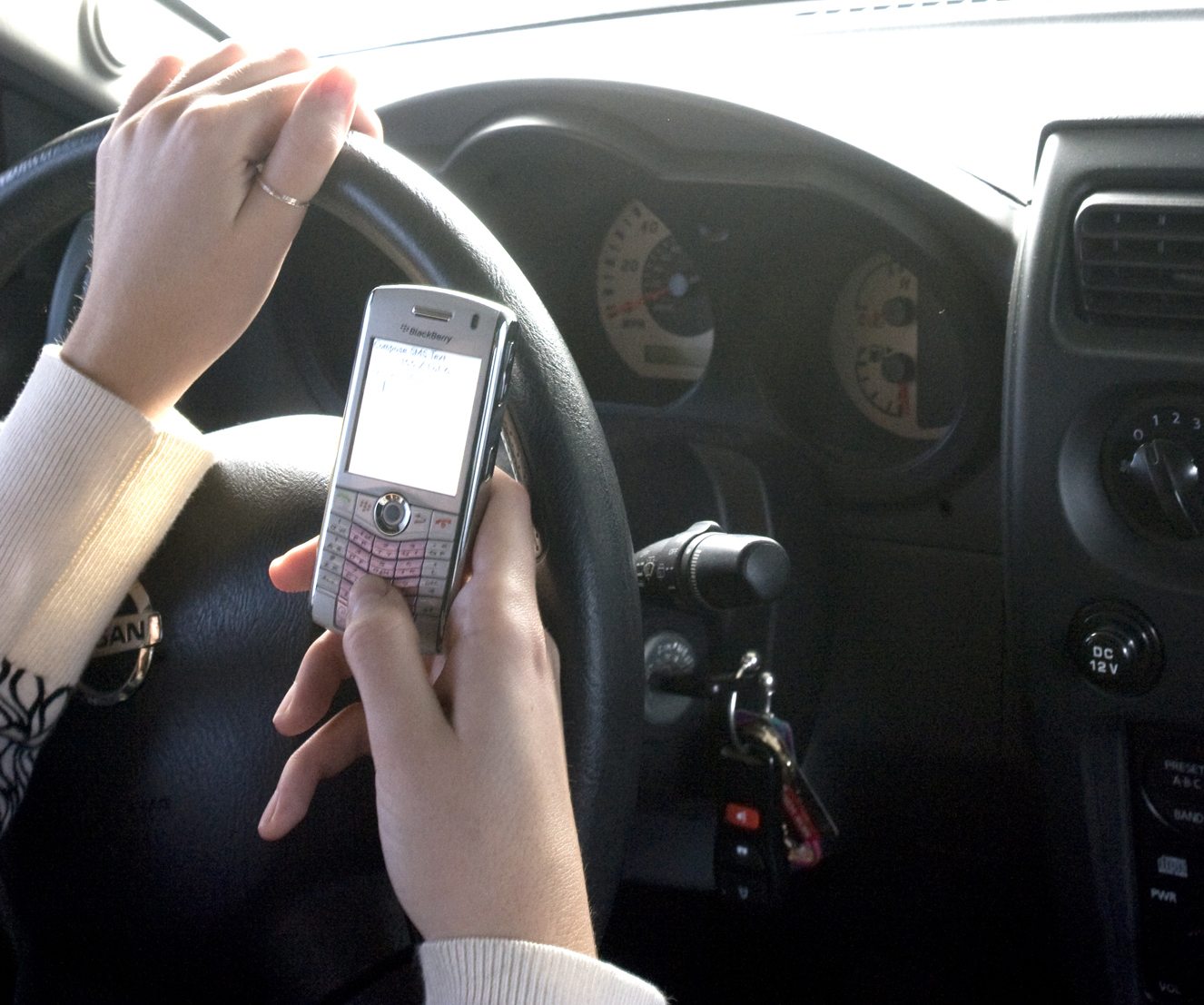Mike Watkins admits it — he’s sent a text message while driving a car.
But that was before the Pacific Northwest National Laboratory physicist realized how big of a danger the practice can be.
It wasn’t disaster that taught him that lesson, though. It was a 2009 sound bite from Transportation Secretary Ray LaHood, who called the phenomenon a “deadly epidemic” at a seminar Watkins attended.
“I heard that comment, and I had to think about that,” Watkins said. “It’s a strong statement. I have two daughters, and at the time they were teenagers, and, of course, they lived on their cellphones. I wondered if there was something I could do to address the problem.”
As a parent, Watkins could have gone with the usual stern lecture. But as a scientist, he decided instead to take a more analytical approach.
He started wondering if there was a way to find a pattern inside
a person’s text message that would indicate whether they were driving while doing it.
“I had a kernel of an idea, and I started to look for a way to do that,” Watkins said. “I wondered if while people were looking at the road and texting, if their texting looked distracted along with their driving.”
It turns out, the texting does look distracted. There’s a distinctly chaotic pattern in the way a person pushes the buttons on a phone while driving that’s different than when somebody who’s not distracted sends a text message.
“Imagine a parent walking across a room, and you could see their footprints,” Watkins said. “Fast or slow, those prints would be fairly regular. But now imagine they’re helping a toddler learn to walk. The steps are much more erratic. That’s a very similar pattern to what you see a person’s finger do when they try to text and drive.”
Watkins and a team of PNNL scientists created a mathematical equation to track that pattern — and it’s more than 99 percent accurate, he said.
With the equation, software developers could create a cellphone app that could stop a person from distracted driving, or at least let them know that they’re doing it.
Prior to this, the best notion for tracking driving while texting was by using a GPS device to follow how fast the phone was moving. The problem with that method, though, is that it would also see a passenger or a rider on a train as a potential distracted driver.
“This method, in contrast, is very specific to the driver, and it can be an app inside of their phone, without the need for any outside equipment,” Watkins said.
No company has built an application like that yet. But the lab would be happy to partner with a company to build one, he said.
The notion of seeing that distracted pattern sounds interesting to Ryan Tanner, a spokesman and trooper with the Washington State Patrol.
“It’s not as easy as you’d think for law enforcement to tell if somebody is texting and driving, even though it is illegal in Washington,” Tanner said. “According to the law, you have to actually be moving while texting, and it’s hard to see because a lot of the time the people have their phone down near their lap.”
In 2009, 5,474 people were killed across the United States in crashes involving driver distraction, and an estimated 448,000 were injured, according to Distraction.gov, a government website focused on the issue.
Tanner thinks it’s probably a much bigger problem than the statistics indicate.
“When it comes to the number of accidents this causes, I think it’s vastly underreported,” Tanner said. “If we ask about it after an accident, nobody’s required to tell us if they were texting while driving. They don’t have to show us their phone or anything.”
That’s not to say that people should fear Big Brother tracking every message they send from their phones, though, Watkins said.
“The things that we are measuring, the data never needs to leave the person’s phone,” Watkins said. “But as a parent, you could require your child to have something like this on their cellphone as a way to protect them. Employers could use it as a way to mitigate their liability for accidents on work time. Even insurance companies could use it.”
An application could simply let a person know that they were driving dangerously, or it could be built to shut the phone off if it detected that text messages were causing a problem.
“One thing that’s very clear is that laws are evolving throughout the United States, and it’s just a matter of time before there’s some sort of lawful restraint put on this,” Watkins said. “Eventually you might see something like this required on the phones of distracted drivers who’ve been involved in accidents.”
Despite his learning how to track the patterns of distracted driving, though, Watkins said he was able to resist the urge to tinker with his daughters’ phones.
“No, I did not modify their phones,” he said with a laugh. “What I did do, though, is let them know about the key parts of my research as I went through it.”
That method worked well. His daughters, now 19 and 22, don’t text while they drive, he said.
The research took about two years to complete and was done through an internal Department of Energy grant worth about $50,000, which is relatively cheap as far as DOE research projects go. The work was also published in a scientific journal in October, 2011.
“This is not about bashing cellphones,” Watkins said. “They’re wonderful devices that do a lot of great things. But if you can shut them down, or just let people know when they’re being distracted, I think that can only help.”
Sue Vorenberg: 360-735-4457; sue.vorenberg@columbian.com; http://www.twitter.com/col_suevo



